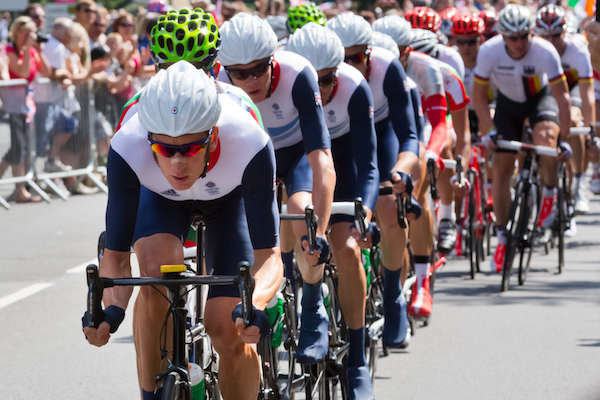All About Cycling
Although it has a much lower profile than swimming, track and field, or gymnastics, cycling is a big part of the summer olympics. There are eighteen different cycling events offering a wide variety of tactical and visceral thrills to viewers. From splattering mud to splintering wood, solo feats and teamwork, cycling has a little something for everyone.
How Does Cycling Work?
It’s just like riding a bike! Jokes aside, most of us kind of know how bicycles work, even if we couldn’t describe why they stay up scientifically. Every cycling event has one goal and rewards one quality — speed. Finish first, and you win.
Why do People Like Watching Cycling?
Each cycling event has its own appeal. I enjoy watching the road races the best because of their complex team tactics. Like in the Tour de France most of the riders are race their hearts out in order to set up one of their teammates for victory. That type of self-sacrifice touches me. BMX cycling brings aerial thrills and, if you are unscrupulous to admit it, the promise of spectacular spills. All together though, cycling is enjoyable because you’re watching athletes do something you CAN do in a way you can’t even imagine being able to do.
Check out some highlights from the 2012 Olympics:
What are the different events?
There are 18 different cycling events in the 2016 Summer Olympics – nine for men and nine for women. An easy way to categorize them is by looking at the surface of the race. Two are on roads, one on mountain trails, one on constructed dirt courses, and five on an inclined wooden oval track called a velodrome.
Of the two races on roads, one is mostly a team event and one basically an individual one. In the road race, all the cyclists start together and riders from each country will work together to create the conditions for one of their riders to make it onto the podium. In the time trial, cyclists start staggered in 90 second intervals and, unless they are passing or being passed, are mostly alone on the road.
In mountain biking and BMX, riders start together and battle it out to finish first. The BMX competition is organized like many of the swimming and running races with initial heats that you have to finish in the top half of to qualify for the finals.
The velodrome is where things get confusing. There is the sprint and team sprint, when competing riders or teams start together, and the team pursuit where teams of riders start on opposite sides of the track and chase one another (although almost never catch each other). There is the keirin, where cyclists have to stay behind a dude (or dudette) on a motor scooter until the last three laps when they get to go as fast as they can. And, finally, there is the Omnium, which consists of six different types of races. I won’t go into detail on all of the six here, but some of them are truly wacky and it’s fun to watch and see if you can figure out how they work!
How Dangerous is Cycling?
Cycling is very dangerous. True, there aren’t cars around to hit these cyclists or door them, but on the other hand, they are going really, really fast. When a cyclist going 45 mph hits the ground, it barely matters if it’s asphalt, dirt, rocky dirt, or wood, it’s going to tear skin and maybe break bones.
What’s the State of Gender Equality in Cycling?
On paper, cycling looks like a pretty good sport for gender equality. The only difference is that women’s races are slightly shorter in some events. Alas, because I know a bit more about cycling than some of the other events, I know that the actual state of gender equality in cycling is awful. Women’s teams are not supported even one eighth as well as men’s, and there is a distinctly chauvinist attitude throughout the sport.
Links!
Bookmark the full Olympics schedule from NBC. Cycling is from Saturday, August 6 to Sunday, August 21.
Read more about cycling on the official Rio Olympics sites for BMX, Mountain, Road, and Track.

